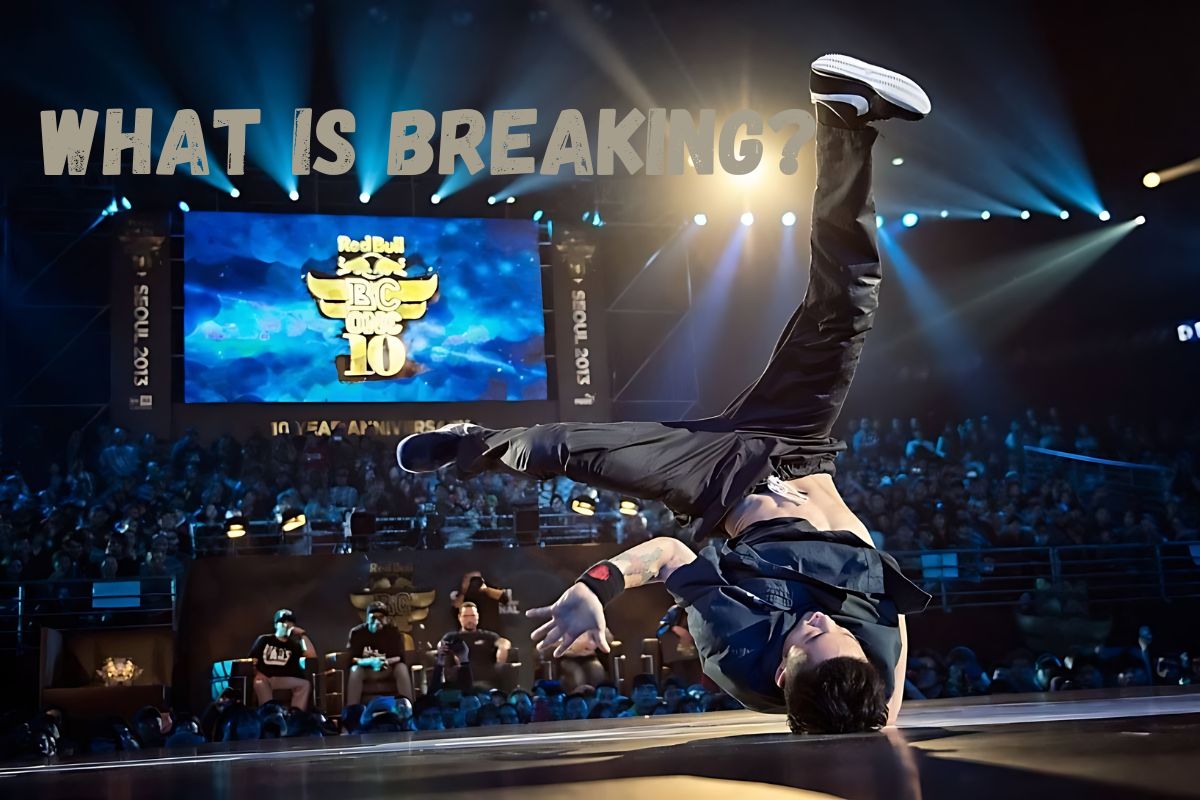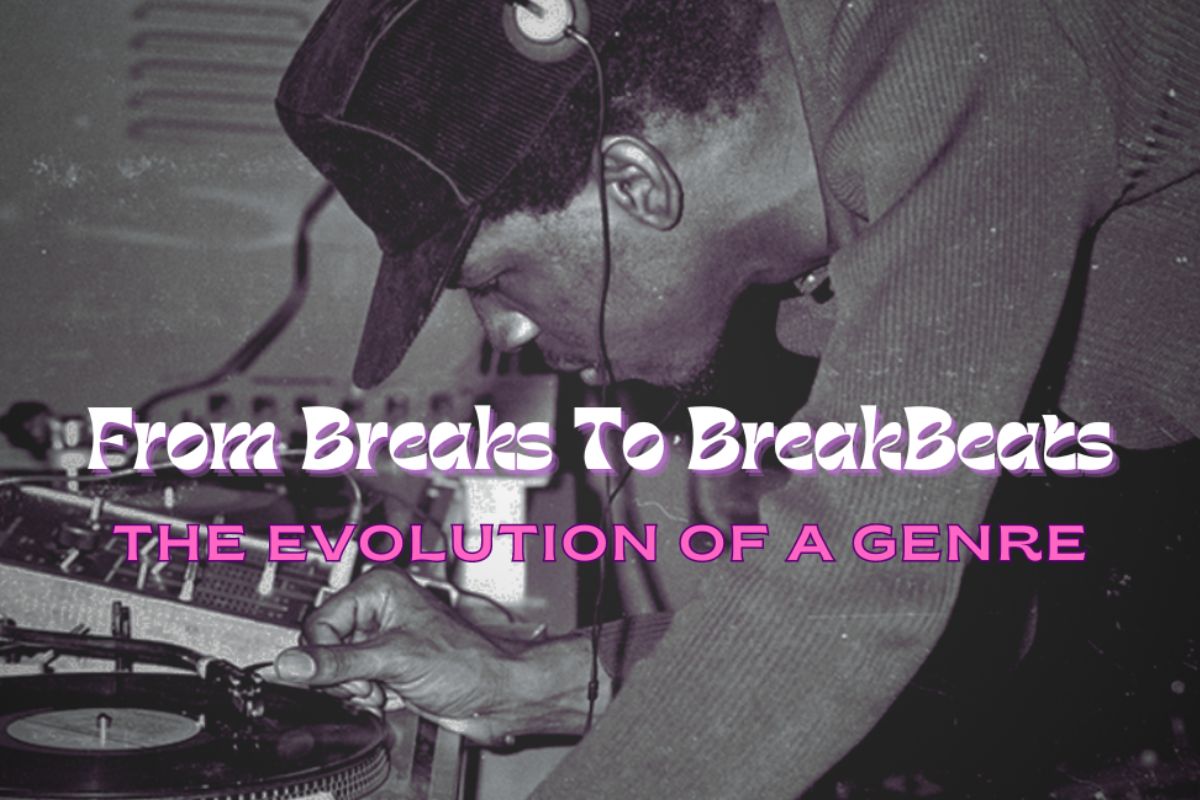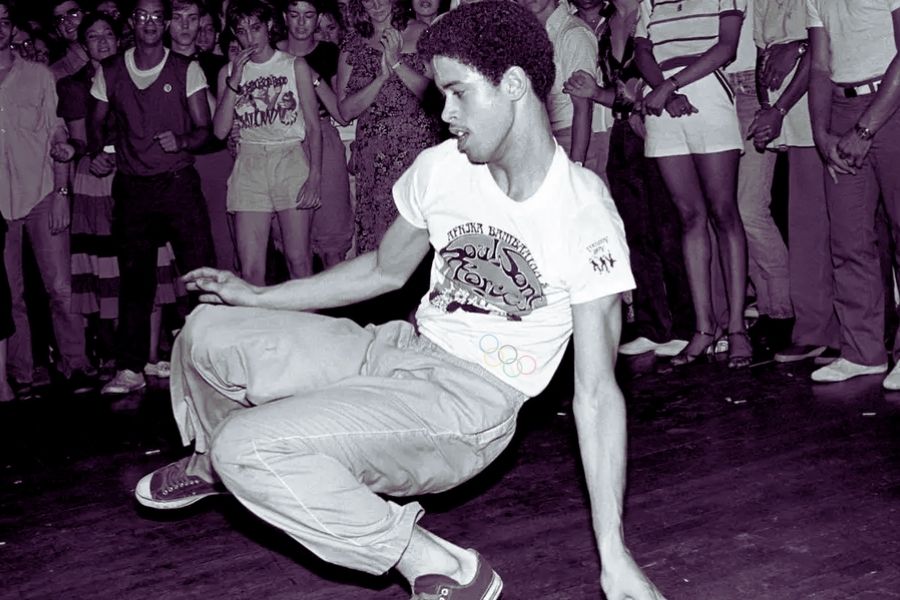Dance has been around for centuries as an art form. Similarly, dance competitions have also been around way before Breaking came into existence. However, it was Hip-Hop that brought a competitive attitude with Breaking. Breaking, unlike other dance styles, always has a direction. It’s always directed towards someone. Breaking is neither a partner dance nor was it primarily made for theatrical stages. It was born in the streets of the Bronx and brought a battle aspect to the world of dance from day one. It was also defined as this aggressive war-like dance style that was meant to make the opponent feel humiliated and beaten. Hence, it gave birth to the battle scene in Hip-Hop.
A culture that already thrived on competition, one of Hip-Hop’s core elements has been dance battles. In a dance battle, the dancers perform their best moves to come out as the best dancers. This article will help you understand how dance battles work in Hip-Hop, are being judged, and have a future as a Dance Sport in the Olympics.
Defining a battle
A dance battle is where two or more dancers are facing off each other, turn by turn, performing their best moves to show they are the best. There are three types of dance battles in the world of Hip-Hop nowadays, essentially:
Crew Battles
These battles include 2 or more members of a crew on each side of the floor, battling it out to be crowned as the best crew. This was the original format of battling when Breaking first started. There were routines involved as well. Routines are choreographed dance moves done in sync with your crewmates. It was the true representation of the Breaking Culture, showcasing the aggression of this dance.
One VS One
As the name suggests, these are solo battles. It was Red Bull BC One that made this format popular in the world.
Style Battles
Both the above categories can include this type of battle. These style battles basically incorporate dancers of different styles into one battle. There can be solo All-Style battles, as well as Crew VS Crew. The only difference in these Style Battles is the music being played. It caters to all genres of Hip-Hop, other than just Breakbeats.
Again, the key battles that got the battle culture popular in Breaking were the ones that took place in the mid-2000s, including The Notorious IBE, Battle Of The Year, Red Bull BC One, and more.
History of battles
Breaking battles, specifically, started off as crew battles. These battles had two groups of dancers on each end of the floor (sometimes streets), battling it out to be crowned as the best by the crowd. Yes, initially, it was the crowd judging us. It was all about smoking the other group and everybody knew the winner.
When Hip-Hop was coming into existence, the late 70s and the early 80s saw a massive rise in Breaking Battles at the Block Parties happening in New York. It was a casual thing witnessed by the crowd that was present in the parks and clubs of New York. These battles, unlike the modern-day Breaking, went on for more than 10 rounds sometimes. It didn’t take much time for the Hip-Hop promoters to pick up Breaking early on for competitions. It was time for battle-exclusive events. These were small-scale events open to the public, happening in community centers, nightclubs, and parks. There weren’t even registrations most of the time. You could just show up and compete.
One historic moment that has to be discussed here is when a legendary battle scene was added to a movie and made it to the Hollywood Screen. This soon blew up the dance battle culture all over the world, not just in Hip-Hop. Below is the iconic scene of Rock Steady Crew battling New York City Breakers in the movie Beat Street.
Why do we need judges or a judging system in breaking?
Before moving on to the different battle formats and how they are judged, let’s discuss why we need judges. We need a judging system in breaking for the following reasons:
– Eliminate bias.
– Have coherent decisions.
– Develop consistency.
– Looking beyond the hype.
– The crowd can’t always be the best judge.
– Maintain quality in the scene.
– Steer Breaking into the right direction.
– Looking at judging as a vital job.
– Standardization in battles.
– Giving training to the judges.
– Judging is a separate skill. The best B-Boy can’t always be the best judge.
– Transparency for the audience and the competitors.
– Make judging less subjective.
– Have a widely accepted definition of what Breaking is about.
– Not being statistical leaves question marks.
– Eliminate errors.
Knockout Battle Format
This is the most commonly used battle format. It starts off with the qualification round which is called Prelims. All the registered participants do a showcase throwdown in a cypher or do a prelim round battle. Note that it is more or less the same process for Crew VS Crew. The judges then decide the individuals/crews moving to the knockout rounds.
From this point on, it’s just like any other top-16 knockout tournament. Usually, it is top-16. But if the competitors are enough to have a top-8 and the schedule allows it, there are top-32 and even top-64 battles as well. Generally, the 4 highest-rated dancers are kept on each end of the bracket to give everyone a fair competition. This makes the tournament exciting for the audience too.
A Word About The Judges
The decisions are based on the votes of judges. This has made the scene more accountable. These judges are chosen on the basis of their position in the scene and their contributions. A good judges panel would tend to have judges of various styles onboard.
It’s easy to pick judges for an all-style battle because you can simply pick judges of each popular dance style. In Breaking, exclusively, the judge’s panel should include both the new-gen Breakers and also the OGs. Then the panel can further be bifurcated into the elements of Breaking. For instance, one master of footwork, one master of uprocks, one master of downrocks, one master of power, one master of freezes, one master of attitude, one master of musicality, one master of originality, and so on and so forth. Most Breakers are often complete so it is easy yet hard to choose a good well-rounded panel.
However, not every good Breaker can be a good judge. There’s also a judges showcase where each judge throws down in front of the crowd. Many Breakers find this as an essential element of battles. This checks the box in people’s minds that the judges are skilled. Again, there’s another school of thought that disagrees with this. It’s often mentioned that the judging ability takes more knowledge of the dance than having the physicality of the dance, and has little to no link to the level of the dancer. As a promoter, you would always want the best dancers to judge because they can put on a good show for you in the judges showcase but for the scene, it’s crucial that we prioritize knowledge over skill here.
Traditional Judging
The judges watch the entire battle just like the audience and after every battle, the MCee points to the judges and they announce the winner. Traditionally, the judges simply point to the winning side. If a judge has his arms crossed, that means he’s given a tie. If the overall decision is a tie, there’s an extra tie-breaker round.
The problem with this judging system in breaking is that the judges tend to forget the first round of every breaker by the end of the battle. Most decisions are hence taken on the last round’s performance. Most of the time these judges are judging battles for an entire evening or a series of days.
There were no set standards as to what the best method was. Some judges would vote round for round while others would prefer to see the battle’s energy in a nutshell. That makes a lot of difference in the final call. When you are judging round for round, you’d be looking for the individual or the crew that has the most number of good rounds. When you are judging the battle overall, you might go for the side that has picked up the pace in the last few rounds and choose them because of the momentum shift.
Getting influenced by the crowd’s hype is another disadvantage to judging without a system in place. It is indeed a tough spot to be on the judges panel and if the battle is close and the crowd is cheering for one side, regardless of what the other side does, you’d tend to vote for the side that has the crowd. This is a natural behavior as we tend to validate our actions by the masses our whole life. Sometimes, this results in unfair judgment on technical grounds because it doesn’t matter how much crowd support the weak side gets or how close the battle is, the winner always has to be the better side.
Peer pressure also comes into play in close battles. Nobody wants to be an outlier. If there are 5 judges and in one or more battles the decision is 4-1 because of you being an outlier, you’d change your judging criteria inside your head and try to vote like others for the rest of the battles. This isn’t always right because the majority isn’t always right.
Lack of exposure is also problematic. Not discussing whether a judge should be an active competitor. That is a separate debate. However, having less exposure to judging battles internationally ultimately puts you out of the radar of being a good judge. Doesn’t matter how great of a Breaker you are, doesn’t matter how many battles you have judged, doesn’t matter how many good calls you’ve taken in your career as a judge, your judging exposure should not be limited to local battles. Moreover, your judging portfolio should also have multiple formats.
A good judge should have some valuable contributions to the local scene if not global. They should also have a healthy competitive background if not present than in the past. Although these two points are often argued as having little to no connection with your judging skills having them is definitely a plus
O.U.R System
The OUR System was established by Dyzee in 2011 and was first introduced at R16 Korea. Its primary objectives were as such:
– Give transparent facts about the decisions.
– Eliminate the bias.
– A diversified judging panel.
– Accountability in the system.
– Audience awareness and education.
– Collect statistics.
Here’s an explainer video by Dyzee himself.
This was a huge breakthrough that addressed most of the flaws in the traditional judging system which wasn’t even a system. It stands for Objective, Unified, Real-Time Judging System. It is unified because this system has standardized the categorization of the judging criteria which are Foundation, Originality, Dynamics, Execution, and Battle. There’s one judge representing each of these criteria who’s mostly known for having a forte in that element.
The Foundation here is about the Breaker’s confidence and approach to music. Secondly, Originality is about having a distinct character, a unique style or technique, and exclusive concepts. Dynamics is about displaying good balance, quicker pace, strength, high energy, difficulty, or crazy flexibility. Execution is only about executing your round with confidence, style, and rhythm. The Battle criteria are all about the Breaker’s attitude, responses, and directions.
It is an Objective System because it has made it possible for the judges to break down their decisions and rate the competitors based on their performance. In each category, there are five scores; Perfect, Good, Average, Poor, and None.
Moreover, in case of a penalty or misbehavior, the scores are made zero.
The best part of the OUR System is that everything is visible on the scoreboard round for round with the category scores in real-time.
Check out the OUR System in its full glory at this iconic battle.
Kozen System
Considering the backlash the judges had to face at the major Breaking competitions worldwide, there came another judging system called the Kozen Judging System which is still being widely used to this day. In one of the most common formats of Kozen, the judges choose a winner round for round. There is a live scoreboard installed right above the judges’ panel for the crowd to see the decision every round. Moreover, the Kozen System is not only about round-for-round judging, it can be tailored to the requirements of the promoters. For instance, the scores can be collected round-for-round but displayed at the end or collected and displayed altogether at the end of the battle.
Kozen Pro provides a range of competition tools. From pre-selection tools to various battle formats and choreography ranking systems. The most common application in Breaking as mentioned above is called Vote-At-End.
The Kozen System was founded by Jing Wang of True Skillz and Niek Traa in the year 2012. It was this crew that later on turned out to be one of the best Breaking Crews in the world called The Ruggeds. Currently, Jing represents Head-To-Toe Crew and Niek represents The Ruggeds. Both of these dancers are internationally acknowledged. They have been full-time dancers for decades. This brought authenticity to the Kozen System just like the OUR System which was founded by Breakers.
Jing had an Industrial Design degree from Eindhoven University of Technology. Participating in R16, Niek who’s also known as B-Boy Just Do It, remained unsatisfied with the judges’ decision which was taken according to the OUR System. He discussed the matter with Jing stating the complexities of the OUR System and wanting to create something simpler. Jing used his educational background to build a new system which later became known as the Kozen System.
Jing created a console system with buttons that was outputting the result on the screen. The first event that featured the Kozen System was The BreakJunkies. Similar to that format, a more latest hype battle using the Kozen System in its full glory can be watched here.
We can clearly see that the majority of breaking events worldwide are using the Kozen System at some point. Here’s a hype battle from the BC One 2014 World Final in Paris using the Kozen System.
Since its inception, the Kozen System has been adapted in various ways. Jing has also developed the consoles for the OUR System. It is worth mentioning here that the Kozen System has also been widely accepted in Open-Styles battles. According to Jing, the Kozen System has now been developed into this full-fledged judging system that can be tailored to the needs of various promoters. It has now become a brand and is a great example of community business as well.
In the future, the Kozen System will have a lot of opportunities in other disciplines and art forms. Currently, the Kozen System has interesting visuals and interfaces everywhere. The goal is always to gamify the process for better education and transparency. Kozen is constantly evolving with time, providing complete packages to the promoters for all sorts of battle formats. In every criterion, the Kozen System has its implications. It’s a system that works on algorithms provided by the technicians at Kozen. It is safe to say that in the future, with different criteria and different battle formats, the Kozen System will stick around for its utility.
Trivium System
In 2013, the World B-Boy Judges Committee was established to develop a judging format that was more educational, and transparent, while being easily understood. This judging system was being prepared for the World B-Boy Series Battles which led to the Undisputed Battles. This committee was led by Storm, Renegade, Roxrite, Dyzee, Niek, Lamine, and Jing. There were initially two systems proposed, the OUR System and the Kozen System.
It was put forward that it should be up to the Breaker to perform however he wants. No way any criteria should limit any dancer to just perform for the sake of winning. It was proposed that both sides would perform on the same part of the track and not just the same song. Most of the breakbeats played have an intro, a buildup. Therefore, both sides should have the same opportunity to rock the music.
At this meeting in Berlin, it was decided that a round-for-round judging system would be the best. It was voted that the Kozen System would be adapted along with some relevant elements of the OUR System made by Dyzee.
The Battle criteria were taken out of the picture because it was unfairly scored in the first round when the first dancer didn’t have anything to respond to. It was decided that it would fall under one umbrella called the Performance Criteria. The Creativity or Originality criteria were put under the umbrella of Foundation because otherwise, both would always go the opposite. A B-Boy who has a traditional approach would score highly in the Foundation but poorly in the Originality. On the contrary, a B-Boy who has a strong sense of creativity will score poorly in Foundation.
Dynamics were also taken out because of what the term represented in Breaking. It stands for crazy blowups and powermoves. It was argued that the criteria would be irrelevant if both sides were only doing dope footwork. What was more important to note was the meaning of the actual term. It stands for change and variety and that’s what it was supposed to represent in Breaking. Hence, Dynamics were put under the Performance criteria as well.
Drosha from Russia also participated in one of the meetings. With his theatrical background, he helped rename these umbrellas. The existing Breaking vocabulary at the time wasn’t sufficient enough to cover all the aspects of the dance. Three terms were put forward; Physical Quality (Performance/Execution and Dynamics), Interpretive Quality (Musicality and Dramaturgy), and Artistic Quality (Creativity/Fundamentals).
There were brochures made for this system for educational purposes. This way, the judges could be schooled and tested by the organizers for being fit for the judge.
It was proposed that the Rating System from the OUR System would be appropriate so the decisions aren’t only in black and white and are shown on a scale. With the input of Jing, they came up with a cross-fader console that helped rate the performances accordingly.
Later, with the input of Buddha Stretch, Y-Not, and other extraordinaries in the scene, the terms Mind, Body, and Soul were coined. Mind included the Personality 13% and Creativity 20% aspect. The body included the Variety 13% and Technique 20% aspect. And, Soul included the Musicality 13% and Performativity 20% aspect. Performativity stands for the element that makes a performance.
And8 jumped into the conversation in 2014. It was concluded that the one element that will be kept from the traditional judging is the Direct Comparison. These scores only matter as long as they are compared with the other competing side. Breaking can only be objectified in comparison. That’s how the battles were judged initially. So, these scores shall never indicate the level of any dancer. This judging system should only be used as a tool to measure who the better dancer is on the day of the competition and in that very battle.
By the end of 2016, this system was called the Trivium System. Many promoters started using this system and it gained more popularity after being used in the Youth Olympic Qualifiers of Breaking.
Breaking Judging System in the Olympics
Now that the Olympic Games are here, let’s discuss the breaking judging system that is specifically designed for the Olympics.
There are 5 criteria:
Technique
- Form: This can be best explained with this video.
- Athleticism: Strength, stability, stamina, and flexibility.
- Dynamics: Contrasts, direction, range of speed, variety of shapes, and positions.
- Spatial Awareness: Control over the space, movement around the space, and centering of the performance.
- Body Control: Control, balance, execution, and precision.
Execution
- Cleanliness: No crashes or sloppiness.
- Consistency of Flow: No hiccups in the flow of the rounds.
- Composition: Movements and transitions, flow to rounds, themes and motifs, pacing, tension and suspense, build-ups and climaxes.
- Storytelling/Narrative: This can be best explained with this video.
Originality
- Personality: Stage presence, connecting with the audience, Olympics, and keeping the attention of the audience.
- Character: Individuality and confidence.
- Innovation: Original moves.
- Spontaneity: Reacting to the changes in the environment.
- Response: Respond to the call, building on what the opponent did and creativity in response.
- Improvisation: Freestyling, adapting to the environment, and new or unexpected throwdowns.
Vocabulary
- Variation: More versions of the moves and alterations of those moves.
- Quantity: More number of moves.
- No Repetition: No similar-looking moves.
Musicality
- Rhythm: Better rhythm of the music and creating your own rhythm.
- Texture: Feel of the dancer matching the beat, reflecting the cues in the music, beyond the rhythm.
- Accenting: Following the ONEs of the beat.
- Sync: Being in sync with the rhythmical changes.
The cross-fader rating console as used in the Trivium System will be the tool used here. Moreover, there are three more buttons that judges are provided with for penalty points.
The Misbehavior Button
Judges can press this button if they see any disrespectful behavior by the competitors that goes against the conduct of WDSF. Level 1 of misbehavior would make you lose 3% of your scores. Level 3 of misbehavior would make you lose 10% of your scores.
The Bite Button
Judges can press this button if a Breaker is observed copying someone else’s moves or styles from the get-go.
The Crash Button
Judges can press this button when the Breaker falls or crashes during the round.
There’s a proper certification that every judge must acquire to qualify for the position. The panel has been carefully picked by the IOC in collaboration with WDSF. It is safe to say that this is the best we could come up with, considering the little participation from all of the OGs in Breaking. With more input, this system could have been more robust. Lastly, this is still a prototype like any other judging system. Breaking is constantly evolving and it will see many more changes in the years to come.
Contributors
Special thanks to these individuals for the insights.
- Jing Wang.
- Dyzee.
- Niek.
Join our exclusive community for the latest updates straight to your inbox! Don't miss out –subscribe now!






